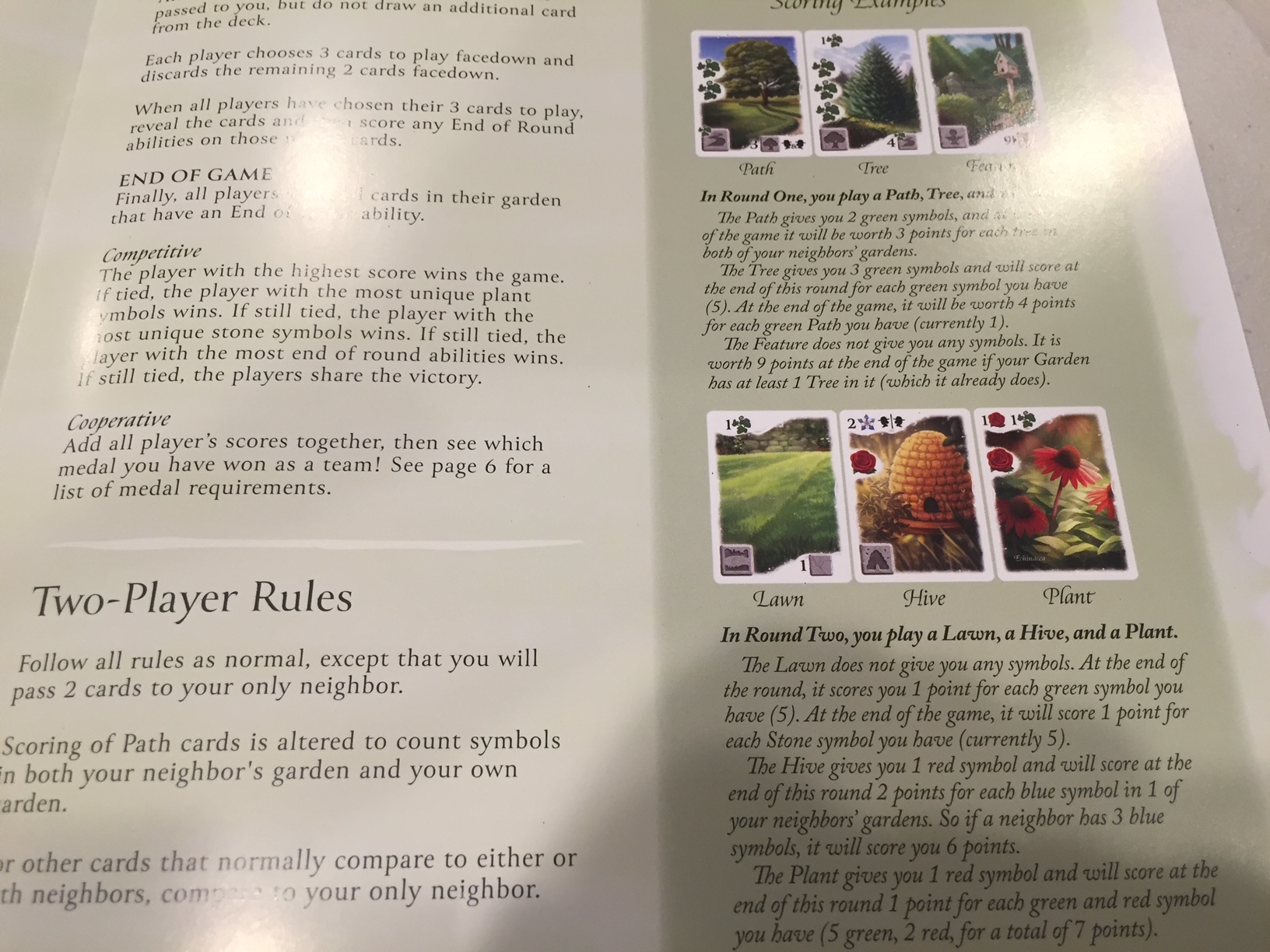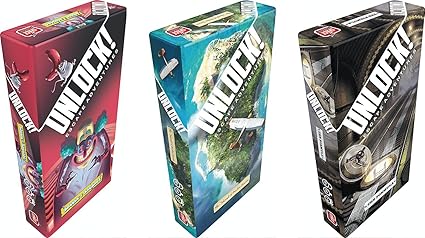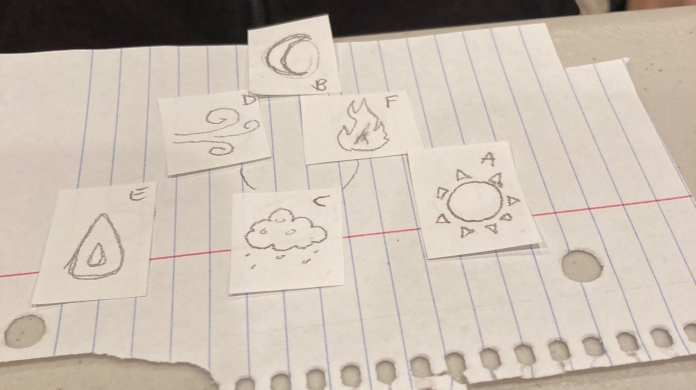We will avoid the major controversy of this game and just call it Burgle Bros 2: The Casino Capers rather than Burgle Brothers 2 (with “brothers” spelled out). I am sure the designer had a good reason to call it that!
Burgle Bros 2: The Casino Capers was a game that was up on Kickstarter and promised delivery in May 2020. It delivered about a week ago as March 28th, 2021, so it’s about a year late. We have been looking forward to this game, as it made our Top 10 Anticipated Cooperative Games last month! The original Burgle Bros was quite a hit at RichieCon’s 2018 and we have been playing tjhe original online via TableTop Simulator (see our Top 10 Cooperative Board and Card Games You Can Play Online). You can see below that the new Burgle Bros 2 is substantially bigger than its predecesssor!
Honestly, Burgle Bros (the original) probably should have made our Top 10 “Small” Cooperative Board and Card Games from a few weeks ago. As you can see above, Burgle Bros 2 does not really fit into the “small” category anymore.
Unboxing
Burgle Bros 2: The Casino Capers comes in a very different box. It is supposed to look like a Las Vegas Hotel! See below:
The box is also weird in that it’s “held together” by the cardboard insert at the bottom.
When you open it up, you see a lot of stuff!

Above, you can see 4 plastic tubes: these tubes will be used to make a 3-D hotel! There are also two mats in the game (rolled and held by rubber bands). A few cardboard punchouts also adorn the top (see above). Below all that mess is a Gamez-Tray with the majority of tokens and cards:

You can see above that the pieces kind wandered around during shipping.

You see a lot of plastic cubes (red used for markers, orange used for “heat”), some wood sticks (used for walls in the casino), and a bunch of wood tokens (mostly for user tokens). All the cards are also intruded in the tray (above right) and a bunch of space for the cardboard tokens.
There’s still more stuff below the red Game-Trayz!

Although this isn’t a legacy game, it includes some stickers and special envelopes for a campaign mode. There’s also a Heist Log (for the campaign game) and a discussion of differences between the two games.
Last and not least are the tiles. These form the two floors of the hotel and will be flipped as the players explore.

Altogether, the components look super good and thematic. They have the same ‘feel’ as the original Burgle Bros!

Mini-Game 1: The Legacy, Dexterity Game

So, Burgle Bros 2: The Casino Capers comes with not just one, but two mini-games! The first mini-game is a legacy, dexterity game where you try to put the stickers on the on the wooden markers! I am being silly here because it was very daunting to put the stickers on!! I call it a legacy game because if you screw-up putting the stickers on, they are like that forever! And putting the stickers on is very precise and “handsy”, so that’s why it’s a dexterity game!

It was actually kind of hard to match the stickers to some of the wooden blocks! For example (below), the two “purplish” characters below both “kinda” fit!

Also, make sure you DO NOT put the stickers on some of the wooden tokens. They look like they should, but the treasure stickers are for the heist log!
Here’s before:

And here’s after:
I didn’t do that great at some of the stickers. Once they go on, they are on that way for life! (If you try to take them off, there’s a chance you may rip them). I think a second sticker sheet with “replicas” of some of the stickers would have helped this legacy, dexterity game!!
Setting Up The Table

So, this game has a bit of cool gimmick. The box becomes the “second floor” of the hotel!
The yellow plastic is a little weak, so you have to be careful not to “shove” the little plastic tubes in too hard, but you still have to apply some force: see above.
Once you flip over the table, you put a mat on the first floor and a mat on the second floor. It’s a little bit shaky, but (after playing through a full game), it seemed to worked pretty well. It just doesn’t necessarily “look” particularly stable (see above).
But it does look cool! The table has a lot of table presence!
Rulebook
The rulebook … is ok. I didn’t love it, I didn’t hate it. There were a lot of questions I had during game play that the rulebook did not answer. There were rules questions about some of the gear, some of the rules on the tiles, some of the final game rules. I was able to make educated guesses on most of them. It didn’t interfere too much with the enjoyment of the game, but I strongly suspect an online FAQ would go a long ways.

The first page (see above) is a components page: that’s good! They just LIST the components without having a corresponding picture: that’s bad. Most of the components are labelled or “obvious”, so it wasn’t too hard to figure out what was what: that’s good.
The set-up page (above) is very good. I didn’t have too many problems getting set-up.

The font is nice, the game is fairly well described, and it’s pretty easy to read (see above).
Overall, I learned the game from the rulebook and it was okay. My real problem was there just seemed to be a lot of edge conditions that weren’t described too well. I strongly suspect you will want to look at a FAQ online once you get going.
Solo Play

So, the box says the game plays 1-4 players. (Ya for following Saunders’ Law) Unfortunately, the rulebook has NO DESCRIPTION OF A SOLO MODE! Many cooperative games just have you assume two positions, so that’s what I did: I chose two characters and just played them both.
At the end of the first campaign, there’s some “rules” to follow to win the endgame (see above). You’ll notice they have descriptions for what to change in a 2 and 3 player game. If we assume the 4-player game is the default rule set, then the lack of “In a one-player game” implies that the solo player either takes control of 2, 3, or 4 characters. For ease, I just chose two characters (see below: The Acrobat and Peterman) and alternated between them.

Set-Up
When setting up the game, you put the Manager’s office on the first floor and the safe on the second floor. There’s also a monorail and escalator on both floors to allow you to move between floors.
There are nine characters (see above) you could play (Ocean’s 9?). Each player chooses one character (except the solo player has to operate two) to play. Each character has a very specific set of gear (see below) that gives that character “extra abilities”. At the moment, you can’t pass gear around (but I suspect a later campaign rule game will allow passing gear to other characters).


Once the game is set-up, it looks very cool on the table! The 3-D second story is a gimmick, but it looks cool.
Gameplay

Each character gets 4 action points. Using those action points, each character explores the casino, looking for the way up to the second floor (via Escalator or Monorail) or the Manager’s Office (on the first floor) or the Safe (on the second floor). As you explore, you flip over tiles and try to avoid the bouncer. If you are on the same tile as a bouncer (see above), you get 2 points of “heat” (see below).
If you get 6 heat (like Peterman above), you lose the game. Avoiding the bouncers is a big part of the game: they move around using little destination tokens that move as the game progresses. By the end of the game, they are hunting the players directly, so you want to get as much done ASAP!

As you explore the floors, you encounter chip tokens (see the Mole and the Crowd above). Some of the chips do bad things, and some do good things. In the case of the mole, he gives you a die! Why do you need a die? Because to crack the safe, you have to get dice to the Manager’s Office so that the safe cracker can roll them!

Above, the Acrobat has 4 dice on the safe space! To crack the safe, he has to roll ALL the numbers on the tiles of the columns and rows of the safe! You can see some “cracked safe” tokens above from a previous attempt!
(The Acrobat is wearing a fake mustache so the bouncer doesn’t bust him!)
Once the players crack the safe, it’s a race to get out! Draw the appropriate Heist Finale card (get that card from the envelope below), and it will tell you what you need to do to get out!

As you play, you will roll dice (when directed by locations or cards), move, avoid bouncers, explore, peek into locations (so you don’t activate it: some locations are bad to activate).
First Impressions

The game reminds me a lot of Burgle Bros. But I think it fixes two major problems I had with Burgle Bros:
- Outstays its welcome. By having three floors in the original Burgle Bros, the original game always seemed a little too long. By the end of the second floor, it always felt like the game should be over. Burgle Bros 2: The Casino Capers seems to fix that problem by only having two floors!
- A little more variety. By having the chips on the Locations, there is a little more variety as the chips cause a fgew more interesting things to happen. Even with the exact same set-up of the Casino, the chips would make the game different.
The game is good. There’s a lot of “discussion” (in a solo game, you plan with yourself) about how to avoid the bouncers and how to explore. And the game is very tense in the end game as it seems the bouncers will get you!
One problem I had with the original game is still in Burgle Bros 2: a bit too much randomness. Between cracking the safe (rolling the dice, what if I don’t get what I need?), the bouncer’s track (if the bouncer goes there, we lose, but the card we draw determines that), the location of the moles in the chips. There are ways to mitigate the randomness (get a lot of dice, try to stay away from the bouncer, use “peeking” to explore locations to avoid bad places), but there is still a lot of randomness in the game. BUT, IT SEEMS MORE THEMATIC IN A CASINO?
An example of how thematic this seems:I was getting frustrated when I almost lost: the bouncer was about to find Peterman, and his heat was too high: If the bouncer got in the same Location, game over! Ah! I’m screwed!
It was the Acrobat’s turn, and I thought we had lost. So, in a panic, the Acrobat went to the Lounge and caused some trouble to “divert” the bouncer!
By having the Acrobat “share a drink”, he was able to get the Peterman out of the way! At this point, I was sold! This felt like a movie moment! I was scared! I did the only thing I could and was able to save the Peterman! That was sooooo cooooool and thematic! I can totally see that moment happening in Heist movie!
One more thing to note: the game has a series of 9 campaigns. It’s kind of cool, but you can completely ignore the campaign and just “randomly” choose one of the 9 chapters to play. I suspect my friends and I will try to play the first few chapters of the campaign. From what I saw, though, the campaign wasn’t “compelling” enough to encourage 9 plays! We’ll see in Part II of this review how much the campaign improves the game.
Conclusion

You know what? I like Burgle Bros 2: The Casino Capers better than the original Burgle Bros game. BB2 is very thematic, it’s a good length, and even though there’s a lot of randomness, that’s very thematic! Luckily (no pun intended), there are ways to mitigate the randomness. The game feels like a heist! If you wanted Ocean’s Eleven in a board game, Burgle Bros 2: The Casino Capers is probably your best best.
Burgle Bros 2: The Casino Capers is a good cooperative game. I strongly suggest you find a FAQ online because the rules skimp on a lot of edge cases. This looks wonderful on the table, doesn’t last too long, and has enough challenge to make an interesting game.
Appendix: Mini-Game 2: The Dexterity Game
This game is very hard to put back together. If putting the stickers on was the first mini-game, closing the box is a the second mini-game. For me, the tubes kept falling out when I tried to close the box, so I ended up having to use the punchout skeletons to hold the tubes in! See pictures below.
This is yet another reason (from a list of many: see here) to keep the punchout skeletons!































































:strip_icc()/pic5483300.png)
:strip_icc()/pic5885719.jpg)
:strip_icc()/pic5880675.jpg)
:strip_icc()/pic3719610.png)
:strip_icc()/pic3327230.jpg)
:strip_icc()/pic2757153.jpg)
:strip_icc()/pic1873572.jpg)
:strip_icc()/pic805139.jpg)
:strip_icc()/pic810050.jpg)
:strip_icc()/pic4907863.png)
:strip_icc()/pic5864647.jpg)
:strip_icc()/pic5856439.jpg)

:strip_icc()/pic4608845.jpg)
:strip_icc()/pic5475799.jpg)
:strip_icc()/pic5474329.jpg)
:strip_icc()/pic4654146.png)
:strip_icc()/pic5847533.jpg)
:strip_icc()/pic5829173.jpg)
:strip_icc()/pic5279047.png)
:strip_icc()/pic4930715.jpg)
:strip_icc()/pic5176438.png)

:strip_icc()/pic3685665.png)

:strip_icc()/pic4042715.png)

:strip_icc()/pic3688496.png)


:strip_icc()/pic4263295.jpg)
:strip_icc()/pic4790686.jpg)















